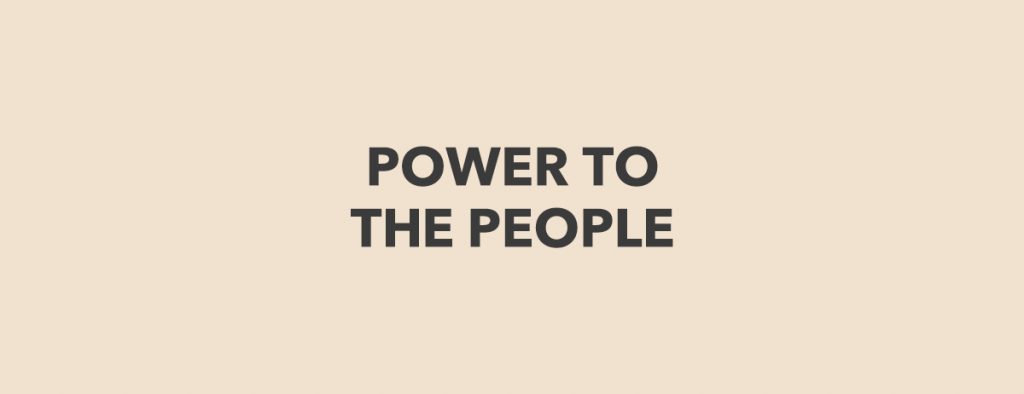
What is decentralisation and where can we see it in everyday life?
Decentralisation can simply be defined as the process by which the planning and decision making abilities of individuals are distributed and delegated away from a central location or group.
Decentralisation has already manifested itself across a number industries in the economy by providing an exit for individuals from traditional institutions. Homeschooling and e-learning has provided an exit from traditional education institutions. Social media has provided an exit from mass media. Bitcoin and decentralised finance has provided an exit from the central banking system and wall street. Remote work and the creator economy has provided an exit from the 9–5 work day.
So how will decentralisation affect various sectors in the economy?
Education
Education has always been the foundation that society is built on. Schools have existed as a space for imparting wisdom from teacher to student since 4000 BCE. Most countries have a formal education system, which is generally mandatory and puts young children through a series of primary and secondary schools up to the age of 18 and in some cases students decide to pursue a specialised education at universities, which have also been around since 1088.
The homeschooling movement began growing in the 1970s, when some popular authors and researchers — such as John Holt and Dorothy and Raymond Moore — started writing about educational reform. They suggested homeschooling as an alternative educational option. According to the National Home Education Research Institute, there are now more than 2 million children being homeschooled in the U.S. This percentage is rapidly increasing each year. Homeschooling is legal in all 50 states and in many foreign countries.
The homeschooling movement coupled with digital transformation has also led to the birth of e-learning platforms such as Coursera, EdX, FutureLearn, Udemy, Skillshare and Linkedin learning that are providing employers with external online courses to train their employees. The E-Learning market has already attracted billions of dollars of funding from investors around the world and is already worth 300 billion dollars as of 2019.
The coronavirus has also led to a major disruption in traditional face to face learning. It has forced a number of premier institutions and national governments to embrace the possibility of providing online degrees and diplomas. For example, the Indian government has embraced this change with open arms as it already faced a problem of having too few colleges for a vast population.
Media
We are all well aware of the rise of social media companies such as twitter, Facebook, snapchat, Instagram and Whatsapp. As of 2020 there are 3.6 billion people using social media worldwide and that number is expected to steadily rise over the course of this decade.
Social media fundamentally differs from traditional media due the fact that traditional media only allows for a one way flow of information while social media provides a platform for a two way exchange of information. Social media essentially places the reader of traditional media in the centre of the conversation and allows for the public to voice their opinion and boy do they!
This difference also makes social media more unreliable as anyone’s opinion can be published to a worldwide audience thereby making everyone an expert on everything and this in turn is further amplified by the notion that “everyone has a social media account”.
However, anyone aware of Noam Chomsky’s work: “Manufacturing consent” would be well aware of the theory that postulates five general classes of “filters” that determine the type of news that is presented in news media. These five filters are: ownership of the medium, the medium’s funding sources, sourcing, flak, and “ fear ideology”.
Finance and banking
In the world of finance we can see how the market is pushing for decentralisation of money by looking at the current trends in the world of cryptocurrencies and decentralised finance.
One of the reasons for the emergence of cryptocurrencies was the presence of intermediaries between the sender and the recipient. Central banks control all fiat ( traditional money) transfer nodes of sending, forwarding and delivery to final hands.
Cryptocurrencies on the other hand are global, decentralised currencies that are created primarily through mining of computer processing power. There are no geographical or political boundaries for them. The largest digital currencies today are Bitcoin and Ethereum.
The difference between Ethereum and Bitcoin is the fact that Bitcoin is nothing more than a currency, whereas Ethereum is a ledger technology that companies are using to build new programs. Both Bitcoin and Ethereum operate on what is called “blockchain” technology, however Ethereum is far more robust as it allows for the building of decentralised applications to be built on top of it. The market capitalisation for cryptocurrencies reached a peak market value of 500 billion USD in 2017 and is currently at a value of 230 billion dollars.
E lending platforms such as Nubank, Monzo, Revolut and many more have attempted to provide an alternative to traditional bankers and debit cards by providing a completely digital lending and payment experience.
The creator workforce
The definition of the creator economy, also called the passion economy, is the class of businesses centred around independent content creators, curators, and community builders. It also includes social media influencers, bloggers, and videographers, plus the software and finance tools designed to help them with growth and monetisation of their creations.
A total addressable market analysis showed me that there are up to 50 million creators which are using platforms like YouTube, Instagram, Snapchat, Twitch, TikTok, Substack, Patreon, and OnlyFans.
The gaming industry already has 2.7 billion users worldwide. This has also added millions of users to the creator economy by providing gamers with an avenue to make money from streaming, selling game accounts and e-sports competitions.
Content creators have found a way to diversify their revenue streams through: advertising revenue shares, sponsored content, product placement, tipping, paid subscriptions, digital content sales, merchandise, shout-outs, virtual events and fan clubs.
The internet itself
The rise of digital transformation across industries promises to provide more independence to students, workers and creators alike but the big question mark of digital transformation has been: How will individual’s data be protected in an age where the internet has created the largest public stage of information exchange in the history of the human race?
In light of the Snowden revelations and the Cambridge analytics scandal, public concerns around spying and privacy have grown.
The proponents of the so-called decentralised web — or DWeb — want a new, better web where the entire planet’s population can communicate without having to rely on big companies such as Google and Facebook that amass our data for profit and make it easier for governments to conduct surveillance.
First, The difference between the DWeb and the traditional web is peer-to-peer connectivity, where your computer not only requests services but provides them. Second, how information is stored and retrieved is different. Currently we use http and https links to identify information on the web. Those links point to content by its location, telling our computers to find and retrieve things from those locations using the http protocol. By contrast, DWeb protocols use links that identify information based on its content — what it is rather than where it is. This content-addressed approach makes it possible for websites and files to be stored and passed around in many ways from computer to computer rather than always relying on a single server as the one conduit for exchanging information.
The decentralised web is not quite here yet. But there are apps and programs built on the decentralised model. Many are experimental but some of the more developed products include the Internet Archive which is a digital library offering free universal access to books, movies & music, as well as 514 billion archived web pages.
Conclusion
As we watch digital transformation attempt to touch every aspect of human life, decentralisation may continue to advance in tandem with the rise of digital integration.
Individuals may see a time where they hold the awesome power of true independence, which will inevitably come hand in hand with increased individual liability and responsibility.
Big institutions and corporations will also face the need to adapt their policies and revenue models to accommodate more well informed citizens and more independently engaged customers.
Reach us for Web design | App Design | Domain, Hosting, Email, Devops | Marketing collaterals | Digital Marketing
For more details reach us at [email protected]
